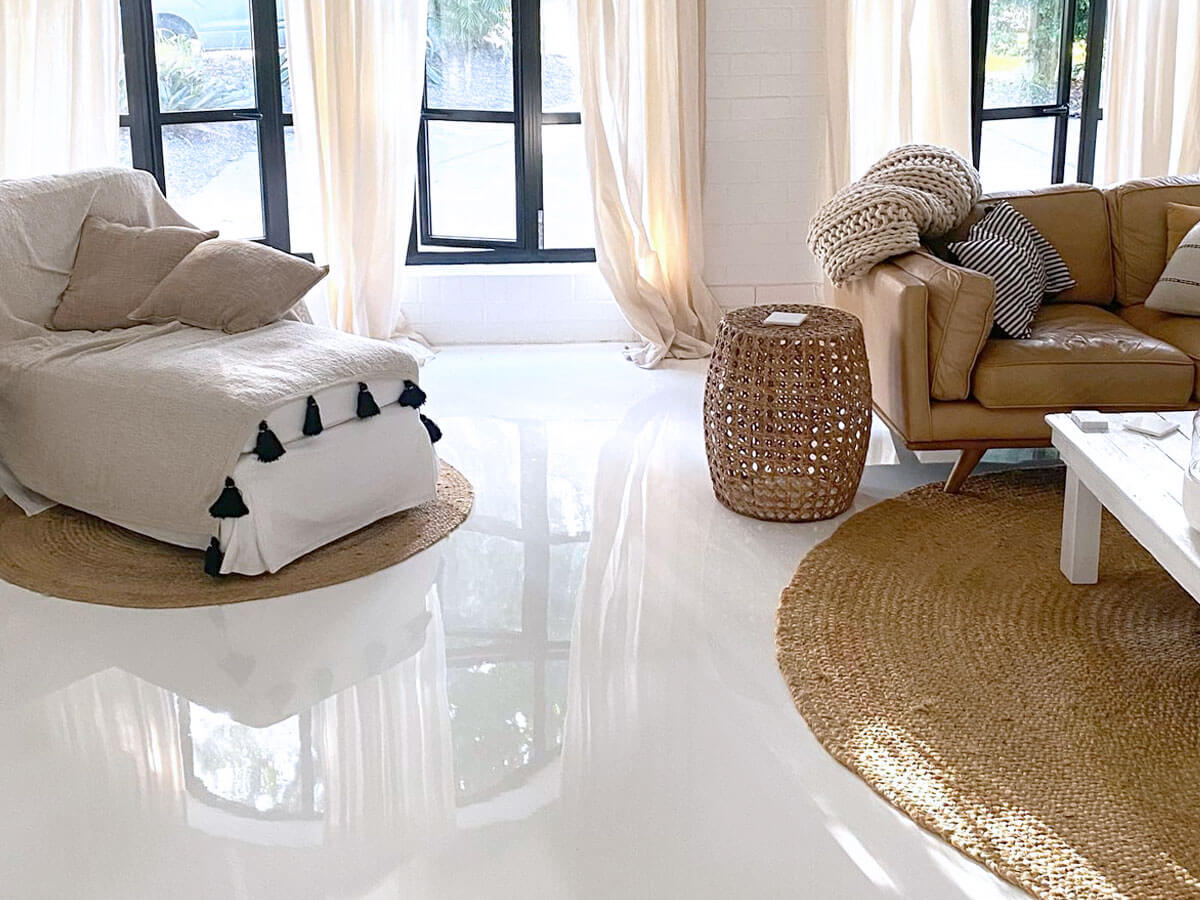Ultimate Guide to Putting Up Sturdy Epoxy Floors in Residential Spaces
When it concerns transforming residential spaces with resilient epoxy floors, a methodical approach is essential. From selecting the suitable epoxy flooring system to diligently preparing the surface and implementing a remarkable application, every action plays a pivotal role in making certain a enduring and visually attractive result. Nevertheless, there's one facet frequently forgot that can significantly affect the durability and quality of the epoxy floor. By addressing this essential factor at an early stage, you can protect your investment and enjoy a seamless epoxy flooring that stands the examination of time.
Picking the Right Epoxy Floor Covering System
Picking the proper epoxy floor covering system is an important step in guaranteeing durability and performance in residential rooms. Epoxy flooring provides resilience, easy upkeep, and aesthetic allure, making it a popular choice for household applications. When selecting an epoxy system, variables such as the sort of epoxy, degree of longevity required, design choices, and spending plan restrictions need to be considered.
There are different types of epoxy floor covering systems offered, including water-based epoxy, solvent-based epoxy, and 100% strong epoxy. 100% strong epoxy is the most sturdy choice, perfect for high-traffic areas in household rooms.

Preparing Your Residential Space
When thinking about the setup of long lasting epoxy floorings in household areas, appropriate prep work of the location is fundamental to making certain a long-lasting and successful application. The very first step in preparing your property space for epoxy flooring is to completely clean up the surface area. Any particles, grease, or dust should be removed to make certain appropriate attachment of the epoxy finish. This can be done with sweeping, vacuuming, and cleaning the floor with an appropriate cleanser.
These need to be filled and leveled to create a smooth and even surface area for the epoxy coating to be used. In addition, check for dampness problems as excessive dampness can create the epoxy to bubble or peel. Welding Inspection Service.
Finally, make certain appropriate air flow in the space during the installation procedure to allow the epoxy fumes to dissipate. Sufficient preparation of the house establishes the structure for a successful epoxy floor covering application.
Using Epoxy Coating
To begin the process of applying epoxy covering, thoroughly mix the epoxy material and hardener according to the producer's directions. It is crucial to comply with the suggested blending ratios exactly to ensure the epoxy remedies appropriately and attains optimum durability. As soon as the epoxy components are mixed, pour the mix onto the prepared floor surface area in a bow pattern.
Making use of a roller with a medium-nap cover, Website spread out the epoxy equally over the flooring, operating in manageable sections to prevent the epoxy from drying out as well rapidly. Make certain to back-roll the applied epoxy to get rid of any type of puddles or irregular areas, making certain a smooth and regular coating.

Enable the epoxy coating to heal according to the supplier's instructions prior to waging any kind of more steps to ensure a durable and resilient surface.
Making Certain Correct Healing and Drying Out
Effective treating and drying out procedures are important to attain the preferred longevity and long life of epoxy floorings in residential rooms. Correct healing includes giving the epoxy finish sufficient time to solidify and bond totally to the substrate. This procedure typically takes about 24 to 72 hours, relying on the specific item utilized and environmental problems. Throughout this duration, it is vital to restrict foot traffic and avoid positioning hefty things on the floor to stop any kind of damage or blemishes.
Furthermore, making certain sufficient ventilation in the area is important for the drying procedure. Correct air movement assists the epoxy finishing to heal evenly and stops any type of problems like gurgling or unequal drying out. Preserving constant temperature level levels within the healing location is additionally essential, as severe temperature levels can adversely influence the treating process. It is suggested to comply with the manufacturer's standards for treating and drying times to ensure optimum results and maximize the durability of the epoxy flooring in household settings.

Preserving and Expanding Epoxy Floor Lifespan
Correct upkeep practices play an essential role in extending the life-span of epoxy floorings in domestic settings. Regular cleaning is important to stop dust and debris from damaging the surface area of the epoxy flooring.
To even more secure the epoxy floor, take into consideration using a new overcoat every couple of years, particularly in high-traffic areas. By adhering to these upkeep pointers, house owners can ensure their epoxy floors stay long lasting and visually appealing for years to come (Welding Inspection Service).
Final Thought
In verdict, setting up durable epoxy floors in residential spaces needs mindful factor to consider of the epoxy flooring system, detailed prep work of the area, correct application of the epoxy layer, official statement and making sure right healing and drying processes. By adhering to these steps vigilantly, property owners can achieve a lasting and visually enticing epoxy floor that improves the sturdiness and aesthetic appeals of their space.
When it comes to transforming household rooms with durable epoxy floors, a systematic approach is crucial. When selecting an epoxy system, factors such as the kind of epoxy, degree of longevity required, style choices, and spending plan constraints have to be thought about.
There are various kinds of epoxy flooring systems available, consisting of water-based epoxy, solvent-based epoxy, and 100% solid epoxy.When taking into consideration the installation of long lasting epoxy floors in household rooms, ample prep work of the area is basic to making certain a effective and long-lasting application.To begin the procedure check out here of using epoxy layer, extensively mix the epoxy resin and hardener according to the producer's guidelines.